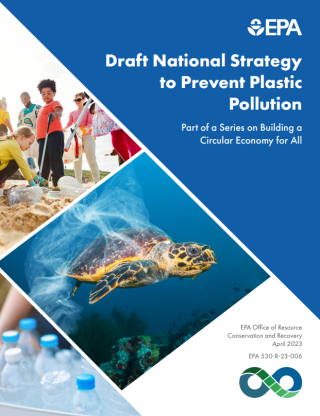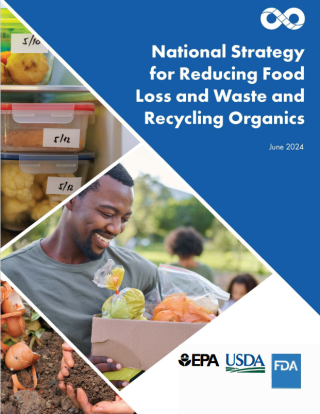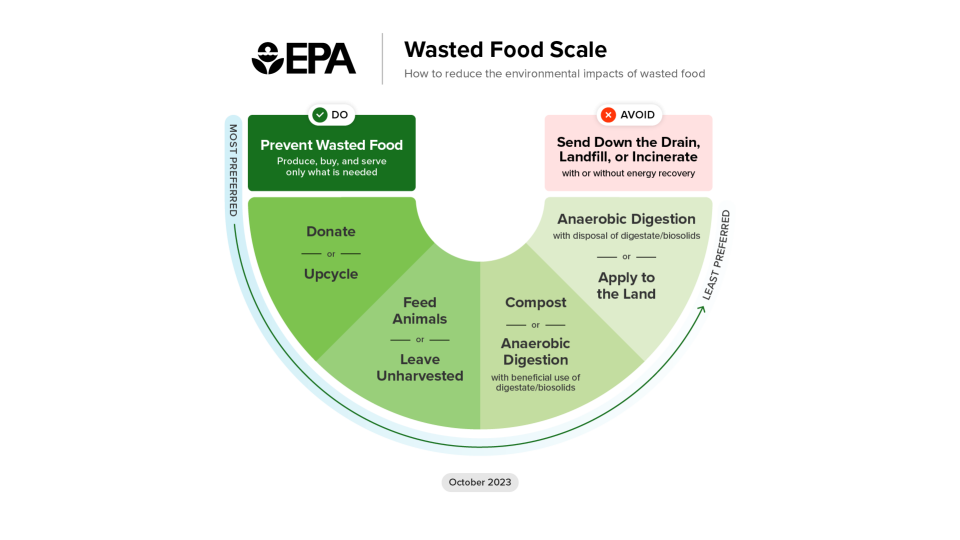Fiscal Year 2024 Accomplishments: Resource Conservation and Sustainability Division
On this page:
- Protecting the Environment and Public Health through Plastic Pollution Reduction, Critical Mineral Recovery, and Improved Science
- Protecting the Environment and Public Health through Updated Resources, a National Strategy to Reduce Food Loss and Waste, and Recycling Education and Outreach
- Advancing Recycling Infrastructure and Creating Jobs for Communities Across the Country
Protecting the Environment and Public Health through Plastic Pollution Reduction, Critical Mineral Recovery, and Improved Science

In FY24, ORCR was instrumental in developing products and hosting sessions that will help our country and other countries prevent plastic pollution, recover critical minerals, and better understand waste generation and materials use in the United States. In 2023, we released the Draft National Strategy to Prevent Plastic Pollution for public comment. EPA received over 91,000 comments, which we reviewed to produce a finalized strategy in the fall of 2024.
In addition, we hosted a series of working sessions to increase battery recycling. The working sessions began in March 2024 and will continue into 2025. These sessions included broader discussions associated with small-format consumer electric and portable batteries along with more focused conversations about mid-format and large-format batteries, including those for e-bikes and e-scooters, vehicles, energy storage, and industrial uses. We are developing battery collection best practices that will cover a wide array of small-, medium- (or mid-), and large-format battery chemistries (lithium-ion, nickel-cadmium, etc.) and uses (consumer products, e-scooters, electric vehicles, industrial storage).
Finally, we worked to improve the scientific rigor behind the Waste Reduction Model by releasing version 16 for public comment, as well as a data quality analysis and a peer review of the model.
Protecting the Environment and Public Health through Updated Resources, a National Strategy to Reduce Food Loss and Waste, and Recycling Education and Outreach
Based on the findings of From Field to Bin: The Environmental Impacts of U.S. Food Waste Management Pathways (Part 2), ORCR released a new wasted food scale, a tool to help decisionmakers understand the best options for managing food waste in terms of environmental impacts. The release of the new Wasted Food Scale marked the first update of EPA’s previous Food Recovery Hierarchy since the 1990s, reflecting the latest science, more recent technological advances, and changes in operational practices.

On June 12, 2024, the U.S. Environmental Protection Agency, U.S. Department of Agriculture, and Food and Drug Administration announced the release of the "National Strategy for Reducing Food Loss and Waste and Recycling Organics." The goal of the strategy is to prevent the loss and waste of food, increase recycling of food and other organic materials to support a more circular economy for all, reduce greenhouse gas emissions, save households and businesses money, and build cleaner, healthier communities.
In September 2024, EPA announced funding through the Recycling Education and Outreach grant program to focus on preventing the generation of wasted food and increasing its recycling through composting. The program provides $39 million to fund one cooperative agreement that includes developing and implementing a national consumer wasted food reduction campaign, expanding the market for and sales of compost, and increasing education and outreach to households on composting.
Advancing Recycling Infrastructure and Creating Jobs for Communities Across the Country
In the fall of 2023, ORCR announced more than $100 million to expand recycling infrastructure and waste management systems across the country, representing the Agency’s largest recycling investment in 30 years. We selected 25 communities to receive grants under the newly created Solid Waste Infrastructure for Recycling funding opportunity. On November 15, 2023, we announced 59 selectees to receive over $60 million in SWIFR grants for Tribes and Intertribal Consortia and 25 selectees to receive over $33 million in Recycling Education and Outreach grants. These grants will improve recycling infrastructure and consumer education for waste management systems across the country as well as meet Congress’ goal to create a stronger, more resilient, and cost-effective U.S. recycling system.
A year later, in September of 2024, we announced $117 million for two separate funding opportunities to advance recycling infrastructure for communities as well as Tribes and Intertribal Consortia.

We also finalized a landmark study requested by Congress on of the U.S. recycling system. This study found an investment of $36 to $43 billion is needed to improve curbside collection, drop-off, and processing infrastructure including manufacturing recycling facilities, composting, anaerobic digestion, and livestock infrastructure. The study emphasized that the nation must make key investments in all aspects of the national recycling system – generation, collection, sorting, processing, and end markets – along with education and policies that disincentivize landfilling materials and that it may be beneficial to focus initial investments in education and outreach in the South, Southwest, and Rocky Mountains, where there are high rates of potentially recyclable material but a lack of infrastructure.

